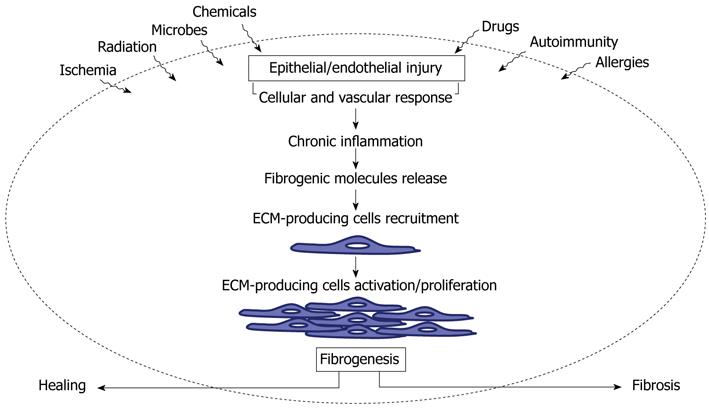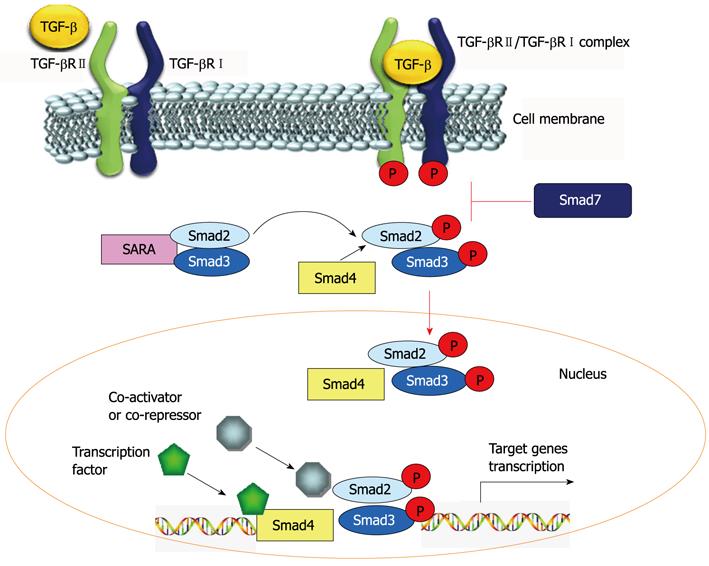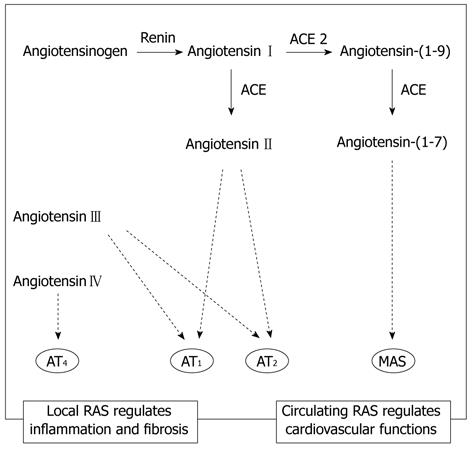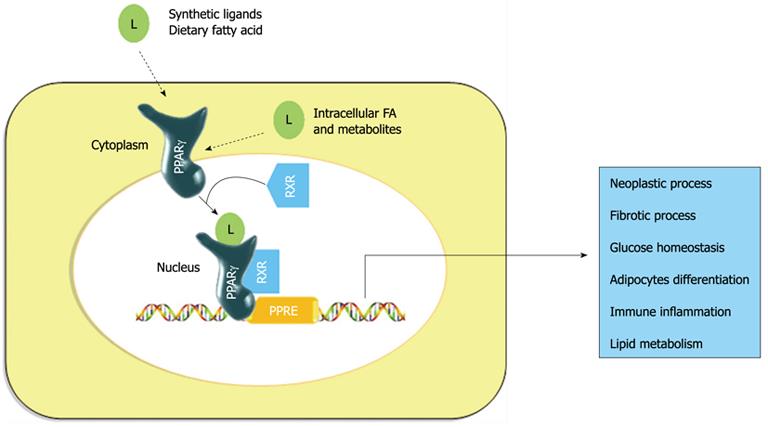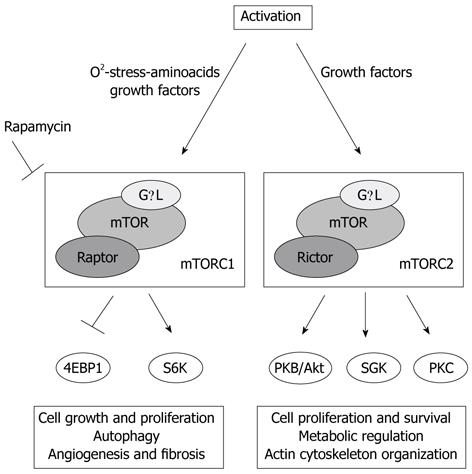Copyright
©2012 Baishideng Publishing Group Co.
World J Gastroenterol. Jul 28, 2012; 18(28): 3635-3661
Published online Jul 28, 2012. doi: 10.3748/wjg.v18.i28.3635
Published online Jul 28, 2012. doi: 10.3748/wjg.v18.i28.3635
Figure 1 Mechanisms of fibrogenesis.
Inflammatory response to tissue damage promotes the release of fibrogenic molecules. These molecules increase activation and proliferation of ECM-producing cells. ECM: Extracellular matrix.
Figure 2 Transforming growth factor-α signaling and induction of gene transcription.
Smad: Small mother against decapentaplegic; SARA: Smad anchor for receptor activation; TGF-β: Transforming growth factor β.
Figure 3 Components and effects of the renin-angiotensin system.
ACE: Angiotensin-converting enzyme; AT1: Angiotensin II type 1 receptor; AT2: Angiotensin II type 2 receptor; AT4: Angiotensin II type 4 receptor; MAS: Mas receptor; RAS: Renin-angiotensin system.
Figure 4 Activation of the peroxisome proliferator activator receptor-γ pathway.
Regulation of several genes involved in fibrogenesis. PPAR-γ: Peroxisome proliferator activator receptor-γ; PPRE: PPAR response elements; RXR: Retinoid X receptors; L: Ligand; FA: Fatty acids.
Figure 5 Features of mammalian target of rapamycin.
mTORC1: Mammalian target of rapamycin complex1; mTORC2: Mammalian target of rapamycin complex 2; 4EBP1: 4E binding protein; S6K: S6 kinase; PKB/Akt: Protein kinase B; SGK: Serum- and glucocorticoid-inducible kinase; PKC: Protein kinase C.
- Citation: Speca S, Giusti I, Rieder F, Latella G. Cellular and molecular mechanisms of intestinal fibrosis. World J Gastroenterol 2012; 18(28): 3635-3661
- URL: https://www.wjgnet.com/1007-9327/full/v18/i28/3635.htm
- DOI: https://dx.doi.org/10.3748/wjg.v18.i28.3635









